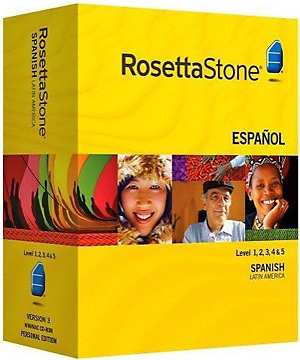The Rosetta Stone software uses a combination of images, text, and sound, with difficulty levels increasing as the student progresses, in order to teach various vocabulary terms and grammatical functions intuitively, without drills or translation. They call this the "Dynamic Immersion method". According to the company, the software is designed to teach languages the way first languages are learned.
Version 2:
Instruction takes the form of a unit of lessons consisting of ten groups (more in some of the later units of Level I) of four images each, with an associated word or sentence both written and spoken aloud by a native speaker of the language, except for those languages that are no longer spoken natively, such as Latin. Lesson topics range from grammatical concepts such as verb tense or mood to specific topics such as colors, hot and cold and associated words or the use of money.
Within each lesson there are sets of exercises testing listening, reading, and speaking (for which the computer must have a microphone). For languages using the Latin alphabet, there are also writing exercises. The writing exercises for non-Latin scripts use a substitute, on-screen keyboard. All sets except reading and speaking offer four exercises each; there are two reading exercises and one speaking exercise. They are identified by the software as A, B, C, D, and E.
The user is offered either text, sound or image (and later, video), to match against four possibilities. With a mark and/or sound chosen by the reader from the preferences menu, the program indicates whether the right or wrong choice was selected. A score from 0 to 100 is kept; it is visible during the exercise in practice mode but not in test mode. The first choice in a group of images nets four points for a correct answer, the second three, the third two and the last one.
In all units, the last lesson is a review of the previous lessons, with each predecessor represented by one group of images. There are no formal grammar guides or instructions included with the software. The only documentation is a manual with written versions of the phrases and a word index.
The version 2 application cannot read the language discs for version 3.
